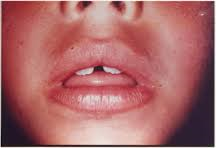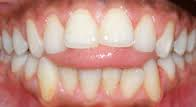 WHAT IS A LISP?
WHAT IS A LISP?
A frontal lisp is the most common lisp pattern I see in young children and adolescents. This pattern of movement presents as the tongue protruding forward to the front teeth or between the teeth to produce /s/ and /z/ sounds (sock= “thock”, zoo=”thoo”). Often times the tongue also moves forward for other sounds like /t/, /d/, and /n/. In addition children tend to carry their tongue forward beyond the lower teeth when their mouth is at rest.
A lateral lisp is another type of lisp that is NOT developmental in nature and should be addressed as early as 3 years. With a lateral lisp, air moves laterally through the sides of the mouth vs. forward and medially.
WHY DO LISPS DEVELOP AND WHEN DO THEY DISAPPEAR?
Infants move their tongues in a back and forth pattern when breast feeding, bottle feeding and spoon feeding. They push the food back and out until their tongue begins to move more dynamically and side to side within their mouth when chewing begins.
There are many variables that need to be addressed to determine why the tongue continues to move in the same way after the age of 5. Much of the literature indicates that 75% of children 4 ½ years old have acquired the /s/ sound with correct placement (Bowen, Kilminister & Laird, 1978). Other sources (Hodson and Porter, 2001) indicate that frontal /s/ production can be seen up until 7 years of age.
In my experience lisp therapy can begin generally around age 6. At that time most children are able to sit for structured therapy and have a motivation to work on sounds. In some instances /s/ distortion has had an impact social interactions and confidence with peers.
Factors that can impact tongue movement must be looked at in order to understand how to proceed.
- Is your child a mouth breather? If so there may be a blockage resulting in an open mouth posture (this can be a structural issue, allergies, enlarged tonsils and/or adenoids).
- Does your child have a high/narrow palate? If so, the tongue cannot rest in that narrow space and moves forward. This is a structural issue.
- Does your child have swallowing issues? Does he/she choke on liquids or wash down food with large amounts of liquid. Often children that have a lisp can swallow in a reverse pattern. This pattern can impact tooth eruption, spacing and orthodontic outcome of results as the tongue will push the teeth forward when braces are removed.
- Does your child have an oral habit where the tongue is out? (e.g. nail biting, lip licking, finger/thumb sucking)
- Is there low muscle tone in the tongue and overall instability in the mouth and face muscles?
- Is there a tongue tie? Sometimes children that have a posterior tongue tie (way under the tongue) have difficulty moving their tongue back. This can result in drooling.
- Is there a lip tie? If so, lip closure can be difficult due to restriction at the upper lip.
A speech-language pathologist with a specialty in orofacial myology is trained to assess and address lisp along with a team consisting of an allergist, orthodontist and otolaryngologist.
I hope this information will serve you well. If you have any further questions or concerns please feel free to contact LORI WASSERMAN-RIZZO, M.S., CCC-SLP at Huntington Speech & Feeding, PLLC (631) 513-0645.

